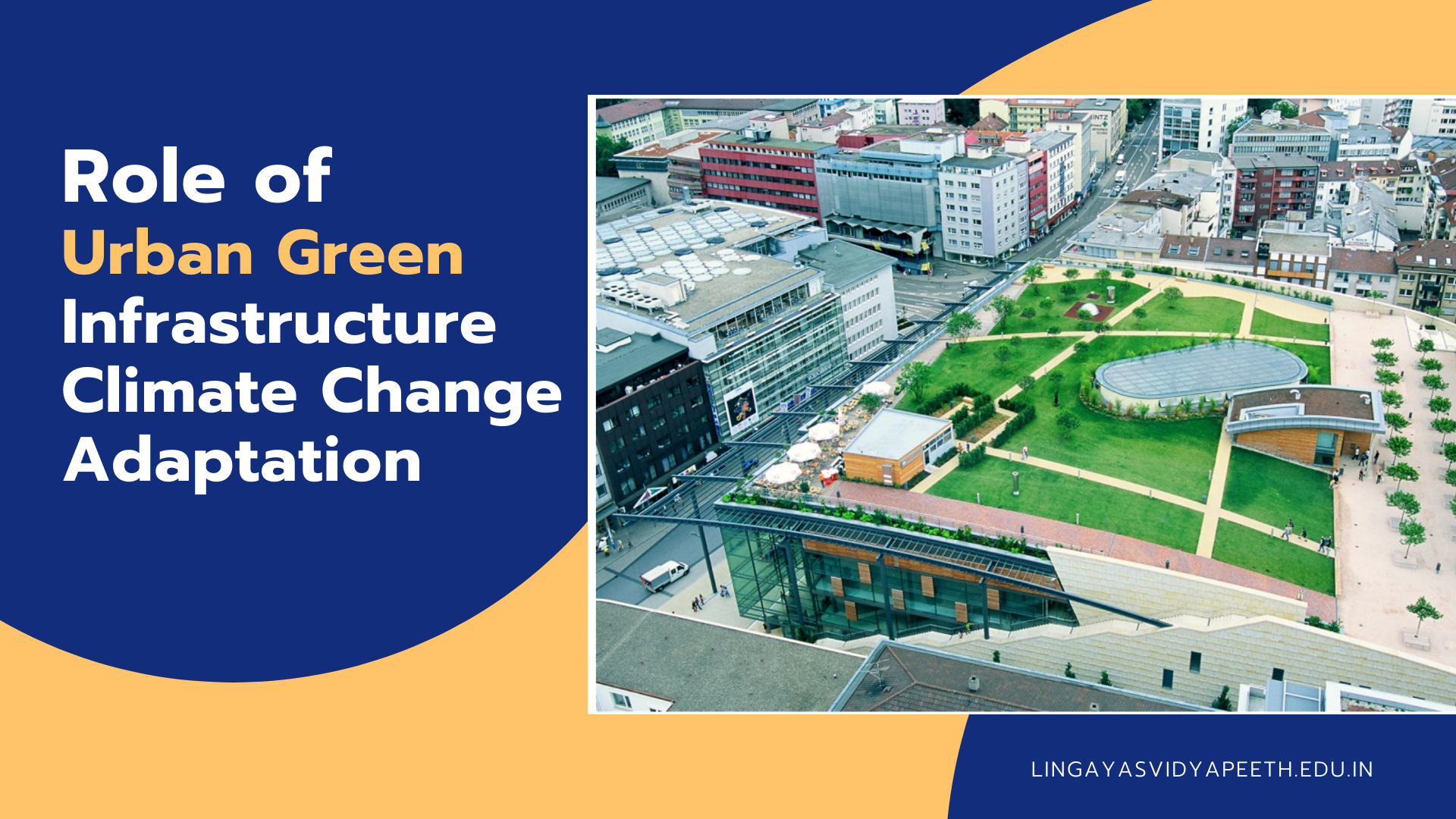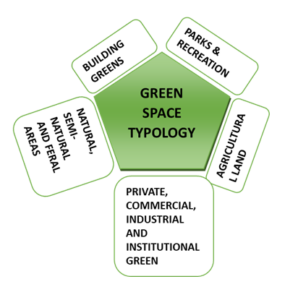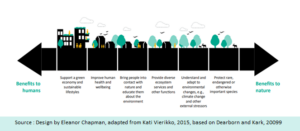Home » Urban Greens: An Adaptation to address Climate Change

The current urbanization trends indicate that we are heading towards a future where we will have to deal with huge numbers in terms of population, land coverage, pollution and temperature. Planning for sustainable cities is therefore a difficult process that takes into account the core tenets of sustainability—economic, environmental, and social equity.
In architecture, you’ll learn to manage various challenges and devise plans for sustainable urban development, addressing pressing issues in modern city planning. Lingayas Vidyapeeth is one of the top architecture colleges in Delhi NCR, offering comprehensive studies in the field.
A growing idea, urban green infrastructure (GI) supports sustainability by serving biotic, abiotic, and cultural purposes. The urban landscape is shaped by parks, forests, verdant pathways, and trees. They have a multitude of positive social effects and consistently improve the quality of life for locals.

The core idea behind “green” infrastructure is that it is seen as a necessary infrastructure that is just as significant as “hard” or social infrastructure. An integral part of the “good life” in cities is urban green infrastructure. It is made up of natural, near-natural, and artificial green areas and supports biodiversity growth and ecosystem services that are important to us as people. Its development as a network, as opposed to its component parts, enables better and more sustainable delivery of its wide range of services.
From rooftop gardens to urban forests, urban green (and blue) spaces are incredibly varied. While some of these areas are already frequently taken into account in planning practice, others—especially private green spaces like gardens and urban farmlands have gotten less attention from studies and practitioners. Their impact on UGI networks is frequently poorly recognized.
Improved Solid Waste Management in Smart Cities
Due to its ability to provide ecosystem services, UGI can be extremely important in both adaptation and, to a lesser extent, mitigation efforts for climate change (Multifunctionality). Significantly, planned adaptation is less expensive than retrofitting and emergency efforts.

Ar. Aditi Arora
HOD
School of Architecture and Planning
Lingaya’s Vidyapeeth
Best Colleges in Faridabad for M.Plan
RECENT POSTS
CATEGORIES
TAGS
Agriculture Agriculture future AI Architecture artificial intelligence BA English BA Psychology BTech CSE BTech Engineering Business management career Career-Specific Education career guide Career Opportunities career option career scope Civil engineering commerce and management Computer Science Computer science engineering Data science degree education Engineering Engineering students English Literature english program Exam tips Fashion Design Fashion design course Higher Education Journalism journalism and mass communication law Law career Machine Learning MA Psychology Master degree mathematics MBA Mechanical Engineering Pharmacy Psychology Research and Development students
University Address: Nachauli, Jasana Road, Faridabad, Haryana
Toll Free: 1800-120-4613
Mobile : 8447744303 | 8447744304 | 8447744306 | 8447744309
Address: C-72, Second Floor, Shivalik, Near Malviya Nagar,
Above HDFC Bank, New Delhi 110017
Ph.No. - 011-46570515 / 45138169 / 41755703 / +91-7303152412
Jagmani Kutir, Ground Floor, Road No-1, Rajeev Nagar,
Near Darbar Marriage Hall, Patna-800024, Bihar
Contact No: 9818352069/8130120095
Mail: [email protected]
Copyrights © 1998 - 2025 Lingaya's Vidyapeeth (Deemed To Be University). All rights reserved.
It is important to note that the following email IDs and domains are fraudulent and do not belong to our university.
LV only conducts physical/online verification of any document related to examination on the following email id: